I Shrunk My Lawn To Grow These 6 Must-Have Ground Covers – They're Low Maintenance & So Much Prettier Than Grass
A longtime gardener reveals the 6 ground cover plants she used to shrink her lawn. Find out why these low-growers are absolute must-haves.


Ground covers are a top choice as turf alternatives for many homeowners. Like grass, they grow close to the ground. But unlike grass, they don’t need to be mowed. Ground covers give you a lot of other design options, too: evergreen or deciduous, native or non-native, with flowers or without.
I personally have always loved ground covers for the areas of the garden where it’s tough to grow grass. They fill in areas where turf struggles to grow and create lush carpets, adding texture and color. Here are some of my must-have ground cover plants that I’ve used over the years to replace parts of my traditional turf lawn.
Why Grow Ground Cover?
There are many good reasons to choose ground cover plants over grass. You might not want to cover your entire lawn, but these are the benefits I’ve seen from transforming some of my grass lawn into spreads of ground cover:
- It covers areas where grass struggles to grow. I’ve found ground cover especially useful in shady areas. You can find plenty of partial sun and shade ground covers that thrive even in gardens that lack lots of natural light.
- Ground cover is low maintenance. If you have a large yard and don’t want to maintain so much turf, replace some of it with a lush lawn alternative like a thoughtfully chosen ground cover that doesn’t require much care.
- Create a wildlife habitat with native ground covers or use ground cover plants to attract beneficial insects like pollinators. Turf grass looks nice, but it’s a monoculture that doesn’t do much to support bees, butterflies, and other wildlife.
- Finally, for me, I love the look of ground cover. Grass is fine, but one or more ground cover plants can add a variety of colors, textures, and flowering ground covers that break up the expanse.
My Must-Have Ground Covers
My favorite types of ground cover add visual interest, are low maintenance, and suit the conditions where I want it to grow. Here are the low-growing plants I recommend for almost every garden.
1. Creeping Thyme
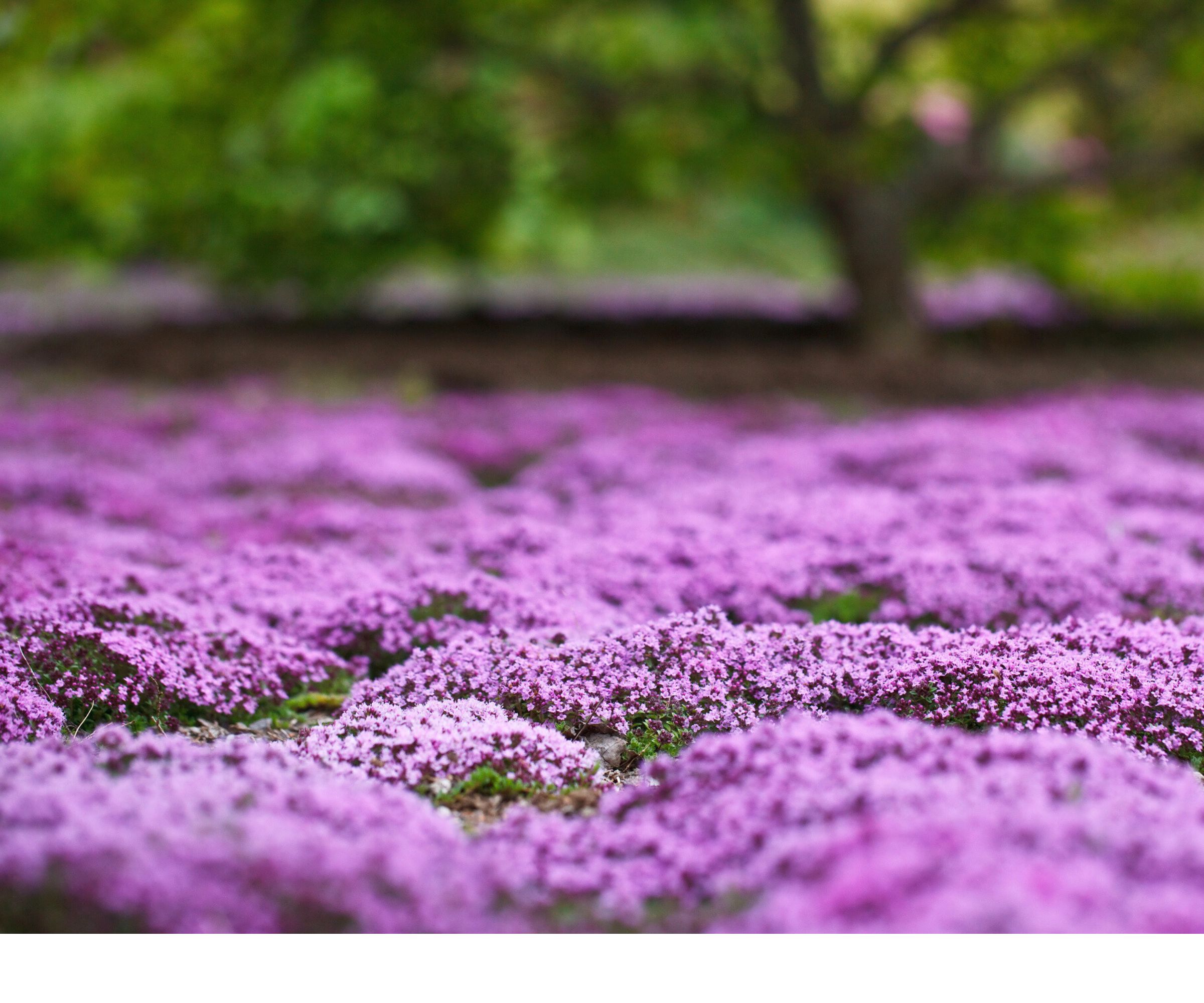
Creeping thyme is one of my favorite ground covers. It grows very low to the ground, in some cases no more than 2 inches (5 cm) high, and carpets the ground with flowers throughout summer.
It’s an evergreen perennial in most of its growing range, so even when it’s not in bloom, creeping thyme creates a large area of green, lush growth. Grow a creeping thyme lawn as an easy-care alternative to traditional turf. Start plants from seeds, which you can get in bulk on Amazon.
You can grow creeping thyme almost anywhere in USDA growing zones 2 through 9. This fragrant ground cover plant needs a location with full sun and well-draining soil, but overall it’s low maintenance and tolerates both poor soil nutrition and drought.
Sign up for the Gardening Know How newsletter today and receive a free copy of our e-book "How to Grow Delicious Tomatoes".
2. Pachysandra
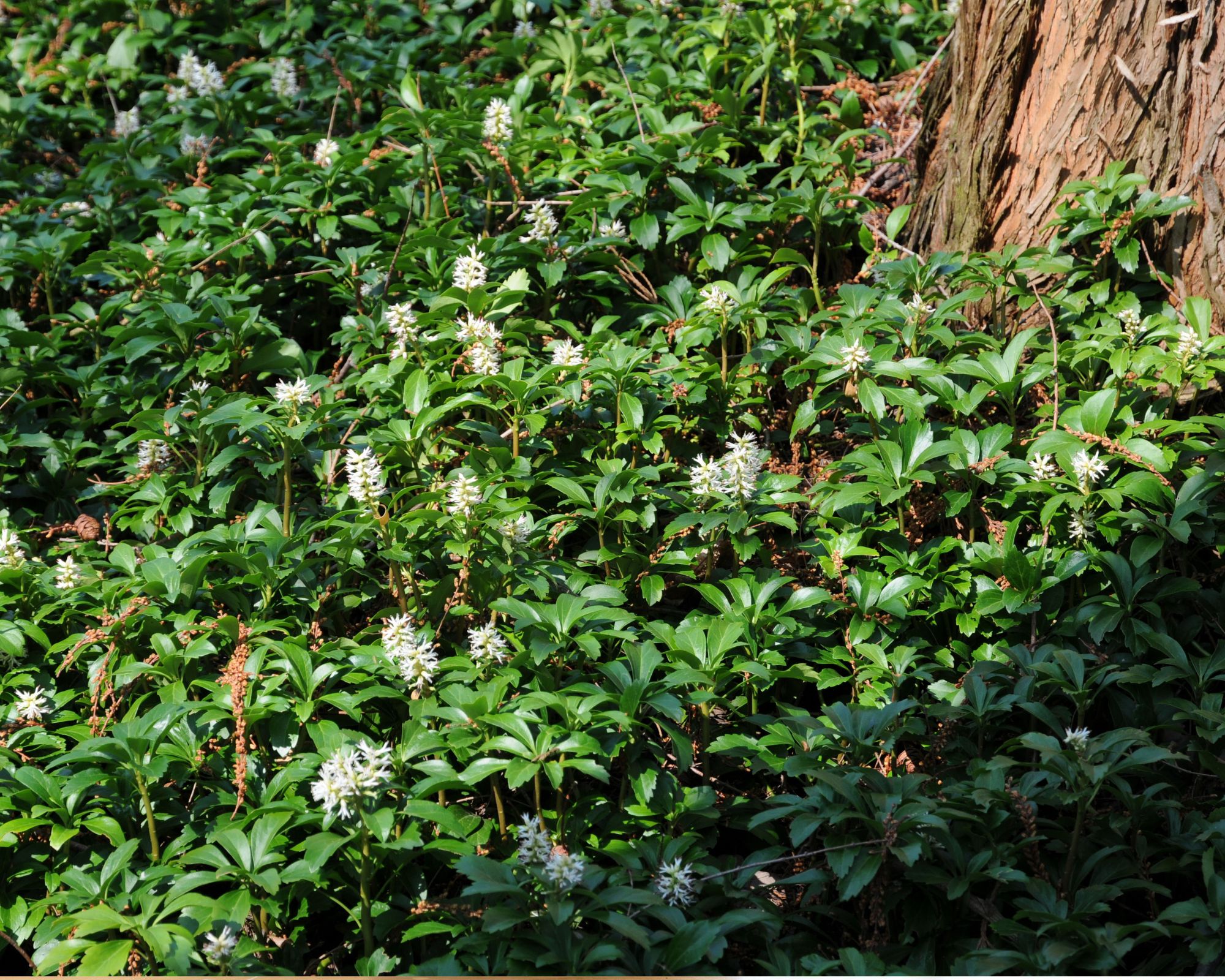
Japanese spurge, or pachysandra, is a perennial evergreen that grows no more than 6 inches (15 cm) tall. It has leathery, dark green leaves that grow densely and is one of the best ground cover plants to prevent weeds. Pachysandra is sometimes hard to find at nurseries and big box stores, but you can get live pachysandra plants online from Garden Goods Direct.
I first grew pachysandra to fill in a shady area where not much else would grow. Be aware, though, that pachysandra is considered invasive in some places. If you choose to grow it, be prepared to keep it contained. Avoid growing it near natural wooded areas where it can readily spread.
3. Moss Phlox
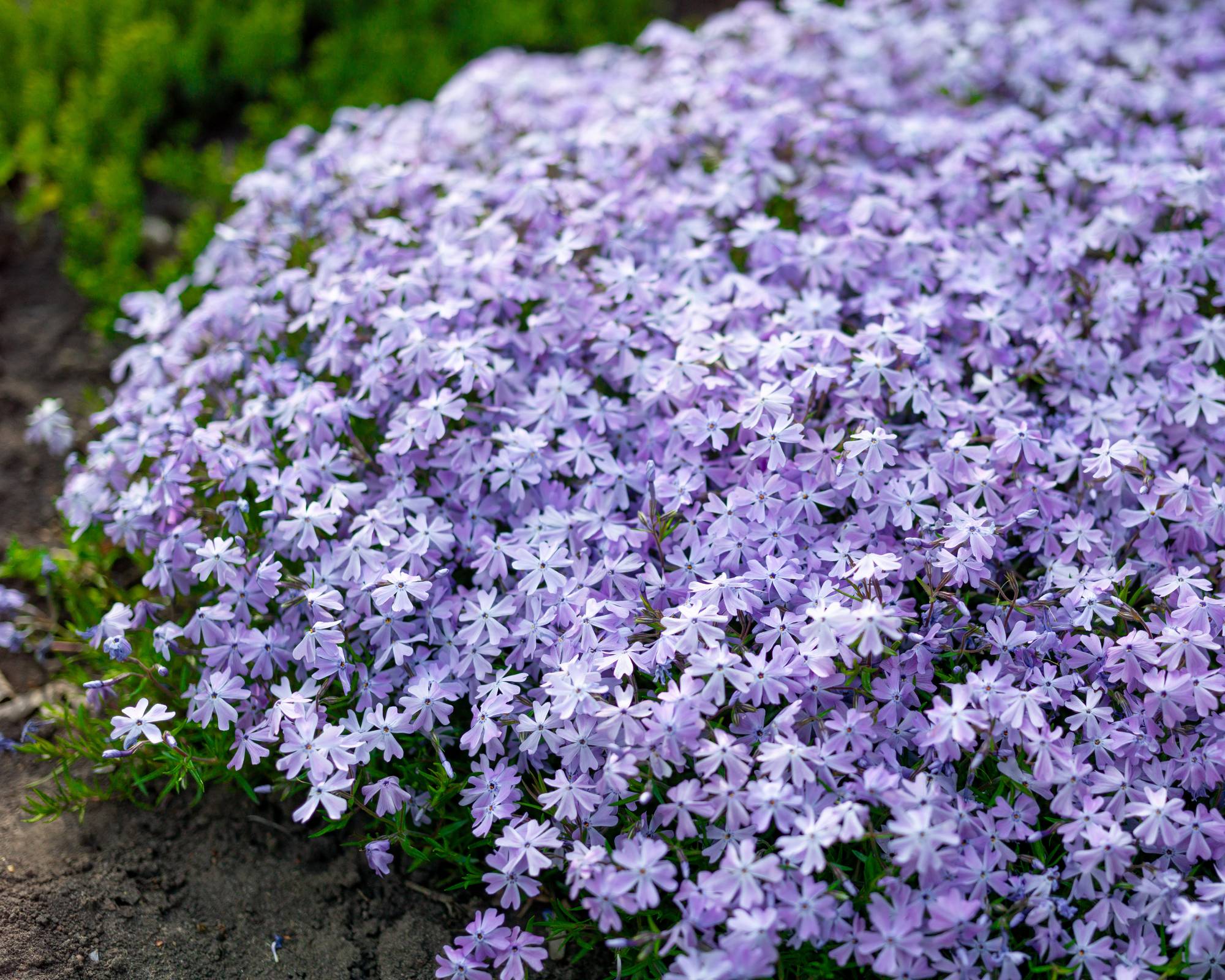
Moss phlox, or creeping phlox (Phlox subulata), is a pretty, low-growing flower that blooms in spring with a stunning display of color. This is a great choice of ground cover if you’re looking for a native option in the eastern U.S. ‘Sherwood Purple’ is a stunning jewel-toned variety that’s available in the Gardening Know How Shop and would look gorgeous in a native garden or perennial border.
Phlox is hardy in zones 3 through 9. It prefers sun but will tolerate some shade. Phlox grows best in soil that drains well, but stays consistently moist. If you cut back the flowers after they are spent, you might get a rebloom. Phlox fits into many areas of the garden, but I particularly like to use it around stones for a simple but elegant rock garden.
4. Dwarf Cinquefoil
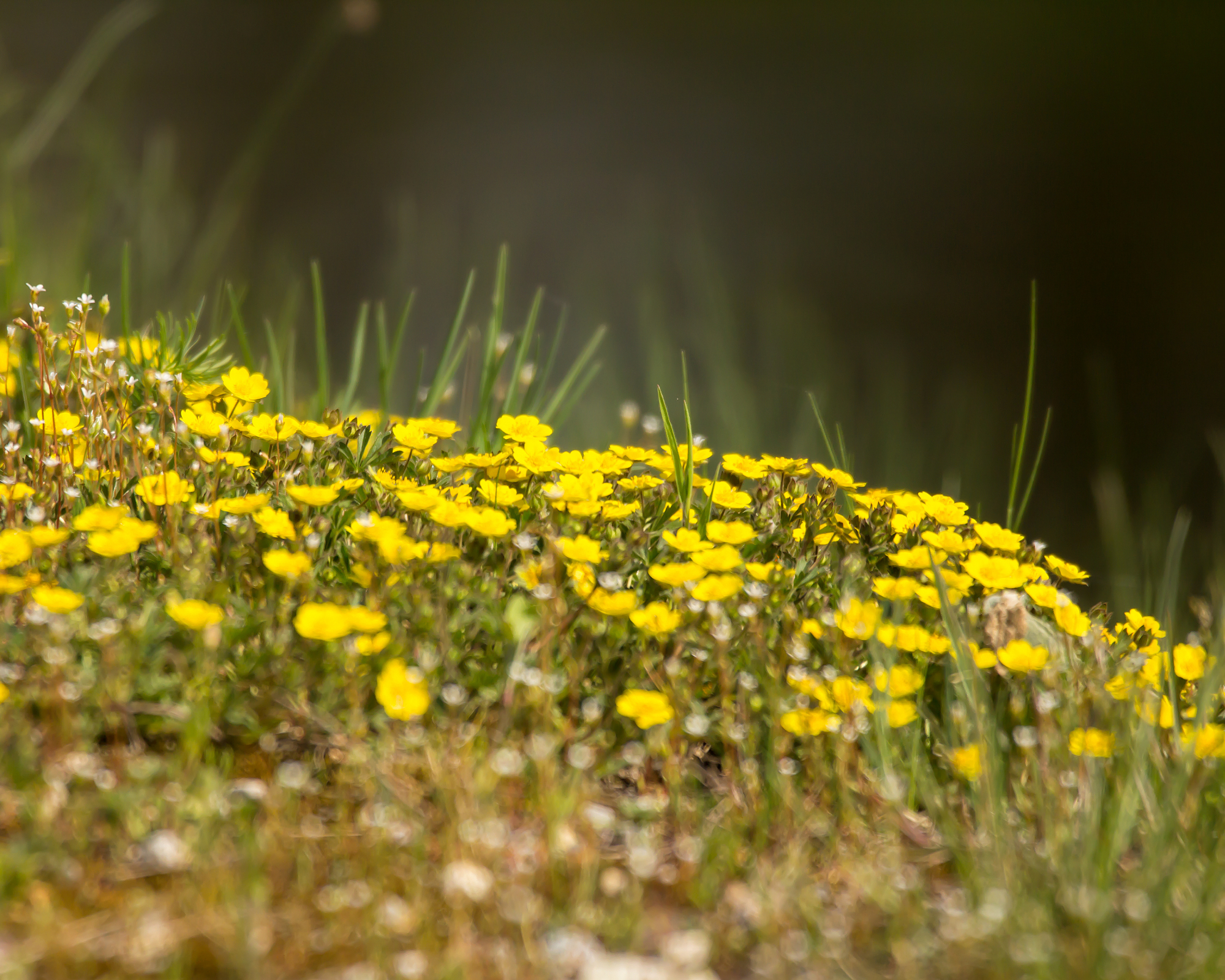
Dwarf cinquefoil (Potentilla canadensis) is a low, mat-forming perennial flower native to most of the eastern U.S. and Canada. Also known as creeping potentilla, this ground cover is easy to grow and rewards you with pretty yellow flowers in spring and summer. It’s also semi-evergreen, so you’ll get some growth year round.
Dwarf cinquefoil is a great native choice for supporting wildlife. Pollinators love it, as do birds who eat the seeds. Grow it in full sun or partial shade in soil that drains very well.
This beautiful native plant can be difficult to find. Look for local native plant sales, native plant nurseries, or choose a cinquefoil shrub from Home Depot to get the same look and low-maintenance care needs with the bonus of additional colors.
5. Lamb’s Ear
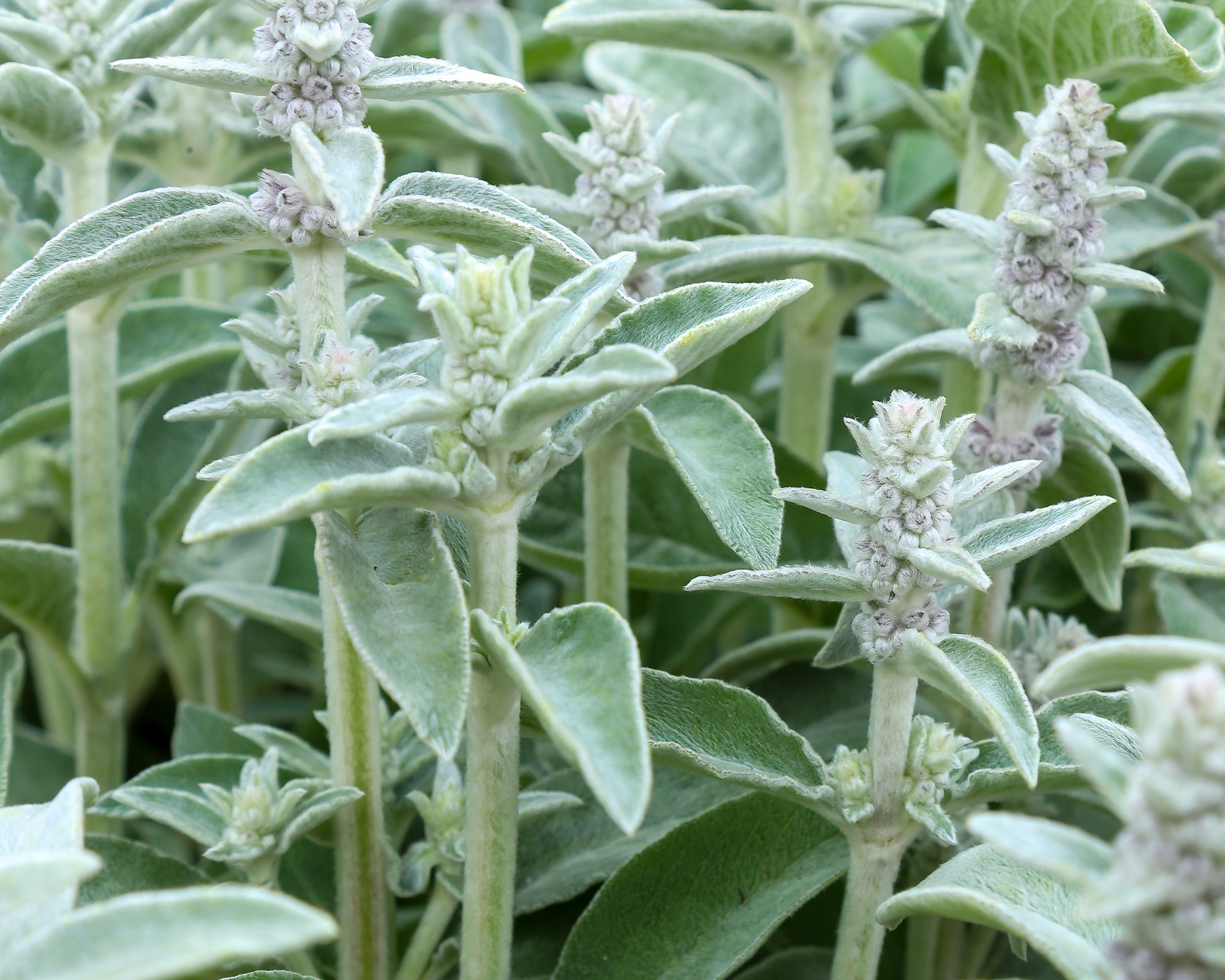
Lamb’s ear isn’t native, but it’s still a favorite plant of mine. It’s hard to resist the soft, silvery leaves covered in fuzz. Not only are they fun to touch, but lamb’s ear adds a unique texture and color to beds that need a low-growing plant. The ‘Helene von Stein’ lamb’s ear from Nature Hills Nursery is a lovely silver cultivar that will grow happily in most parts of the U.S.
Lamb’s ear is a little taller than other ground covers, reaching about 12 inches (30 cm) high at maturity. A sunny location is best, but some shade is okay for this plant as long as the soil drains well. It can tolerate drought, dry soil, and it’s deer-resistant.
6. Snow-in-Summer
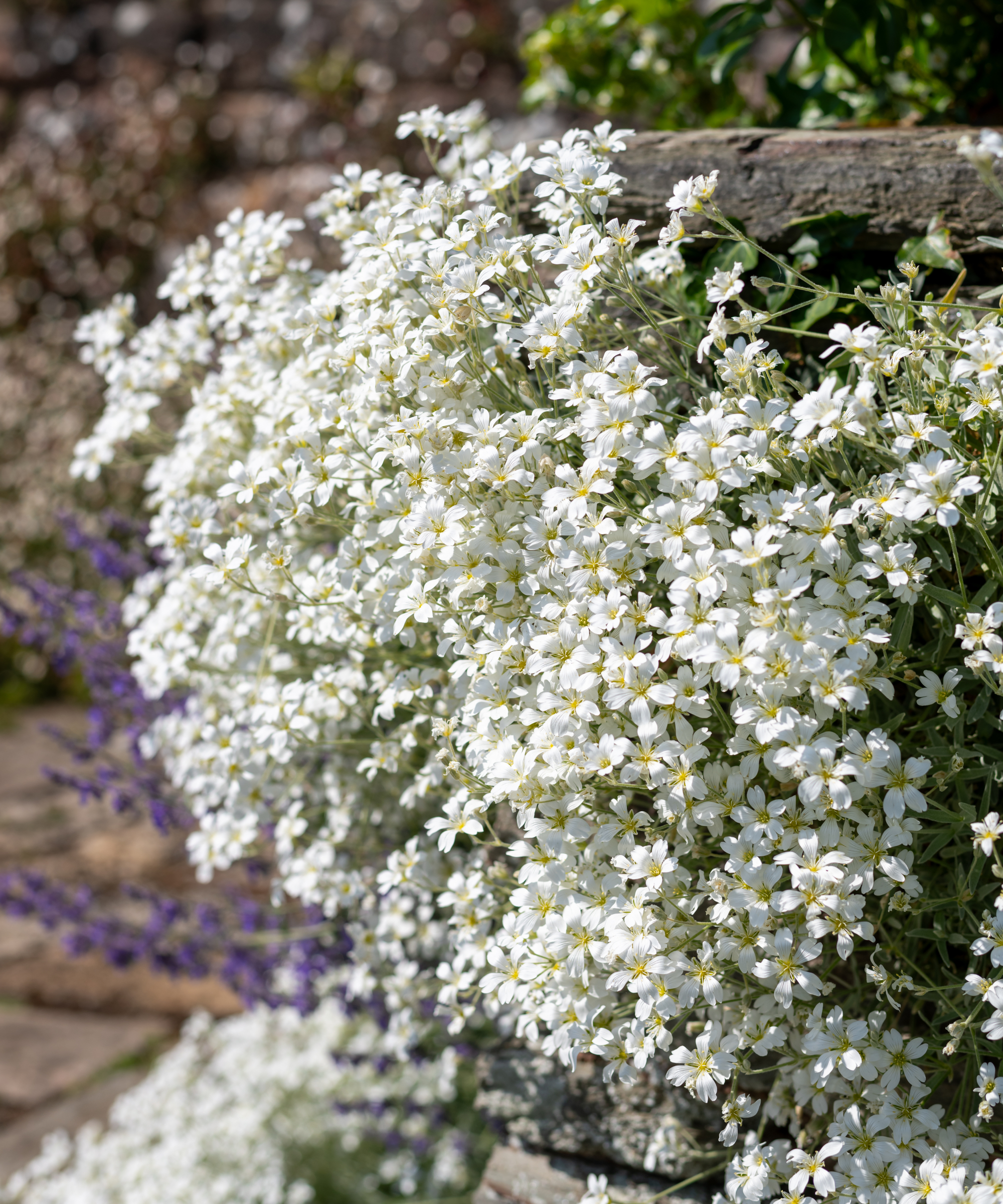
Another non-native that is safe to grow carefully is snow-in-summer (Cerastium tomentosum). I love this ground cover, which grows no more than 12 (30 cm) inches tall, for its profusion of white flowers in spring and early summer.
It’s a fast-growing ground cover that fills in spaces quickly and loves sunny areas, making it one of the most heat-tolerant ground cover plants on this list. While it’s suitable in zones 3 through 8, snow-in-summer is best for dry climates. Buy snow-in-summer seeds in bulk on Amazon to transform your yard or garden with this beautiful, drought-tolerant ground cover.
This article features products available from third party vendors on the Gardening Know How Shop. Keep in mind that our plant inventory is limited—so if you’re thinking of purchasing, don’t wait!

Mary Ellen Ellis has been gardening for over 20 years. With degrees in Chemistry and Biology, Mary Ellen's specialties are flowers, native plants, and herbs.